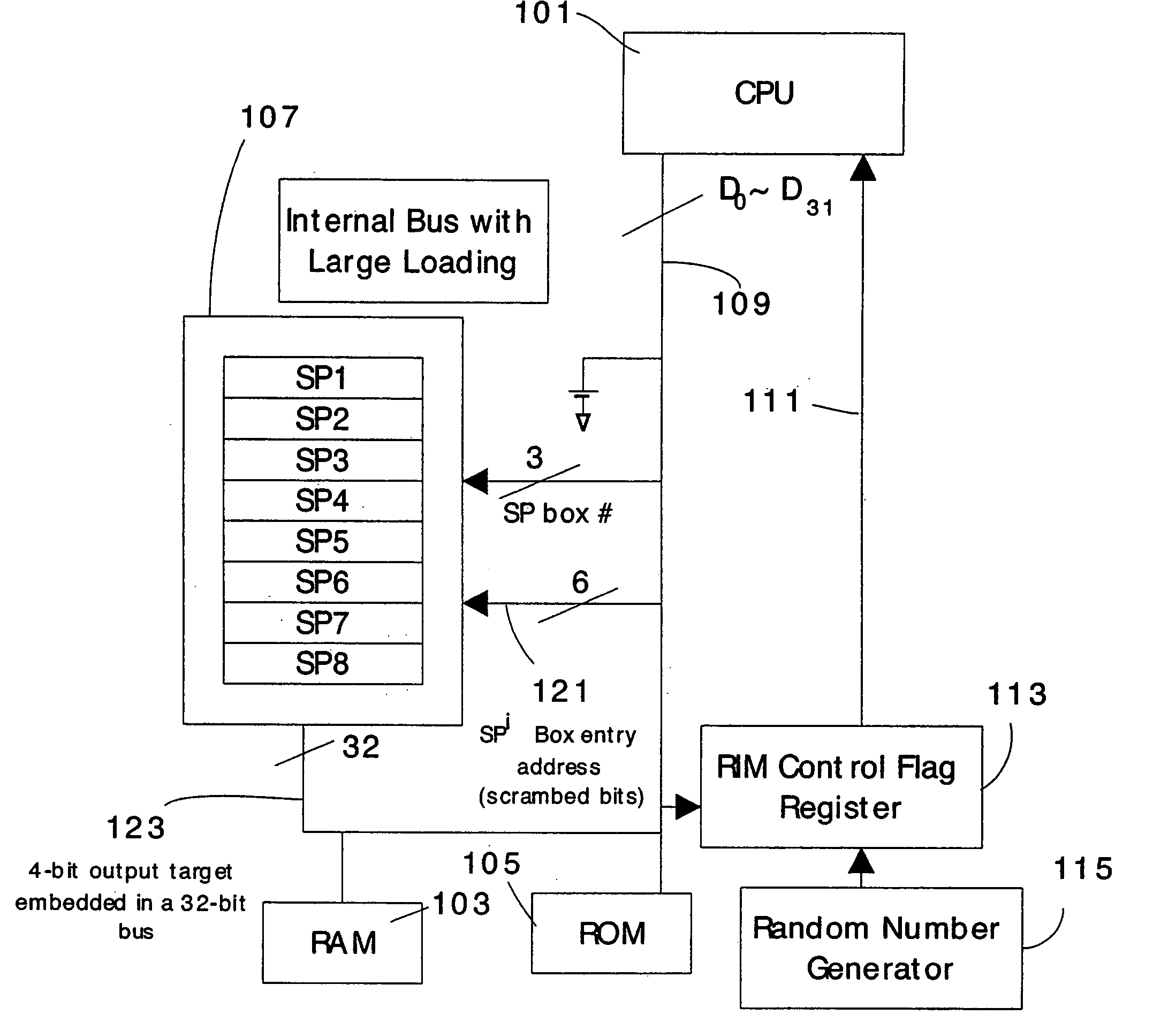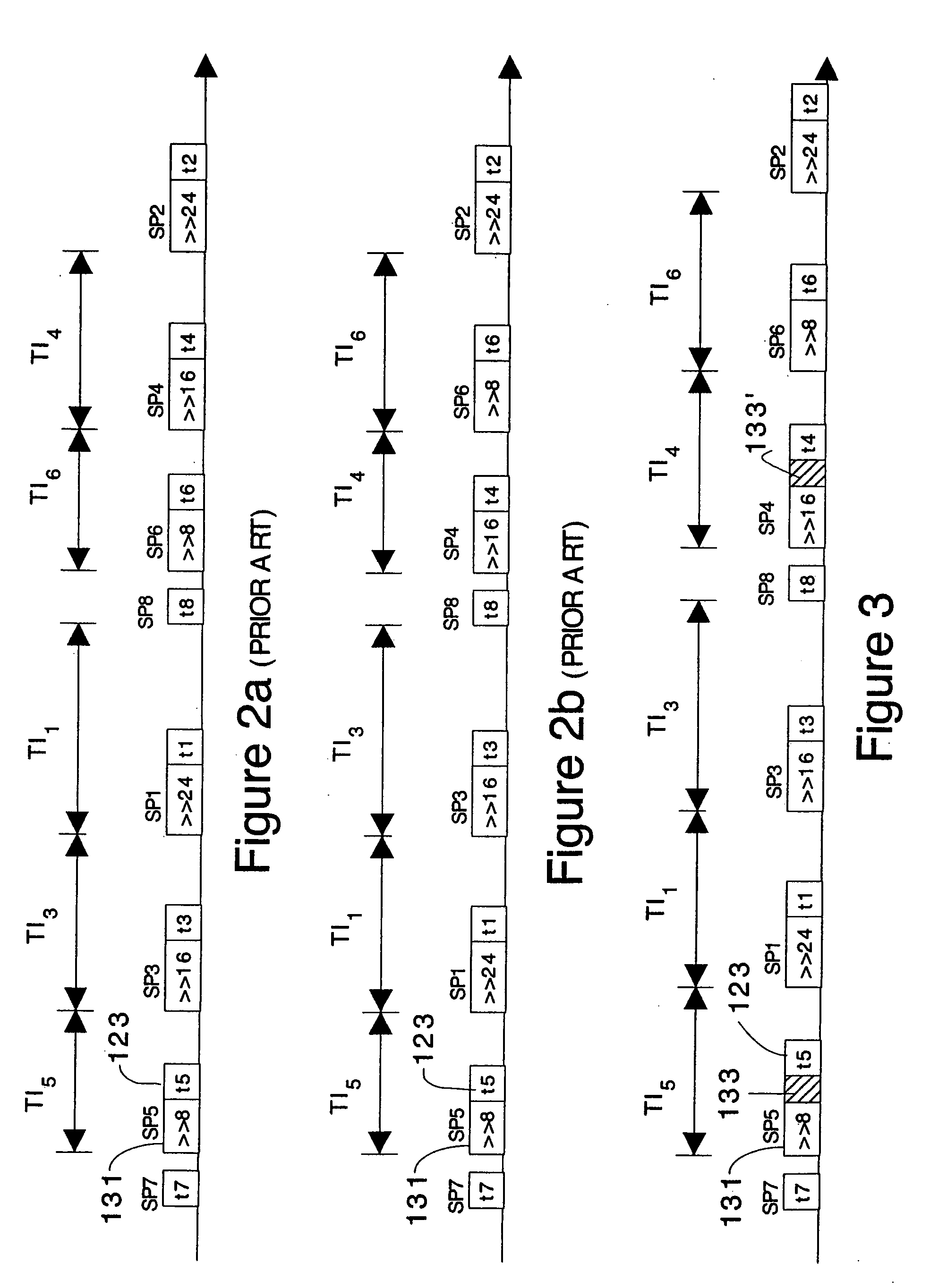Cryptographic architecture with random instruction masking to thwart differential power analysis
a cryptographic architecture and random instruction technology, applied in the field of cryptographic methods and cryptographic architecture security, can solve the problems of unusable leaked information, inability to guarantee power, and inability to expect cryptographic devices, such as smart cards, to be completely leak-free,
- Summary
- Abstract
- Description
- Claims
- Application Information
AI Technical Summary
Benefits of technology
Problems solved by technology
Method used
Image
Examples
Embodiment Construction
[0039] Table 1 shows values, expressed in the C language, for SP-boxes 1 and 2 implemented as lookup tables of 64 elements.
[0040] Table 2 is a C language program that sequentially accesses DES's eight SP lookup tables for a given round.
[0041] Table 3 is an assembly language program to implement C program statement no. 5 of FIG. 2a.
[0042] Table 4 is an Assembly language program of a 16-bit CPU to implement a portion of the DES encryption algorithm that performs eight S and P boxes' operations in turn by accessing sequentially each lookup table.
DETAILED DESCRIPTION
[0043] The present invention now will be described more fully hereinafter with reference to the accompanying drawings, in which preferred embodiments of the invention are shown. This invention may be embodied in many different forms and should not be construed as limited to the embodiments set forth herein.
[0044] The following discussion provides one context for using the present invention in connection with a well-kno...
PUM
 Login to View More
Login to View More Abstract
Description
Claims
Application Information
 Login to View More
Login to View More - R&D
- Intellectual Property
- Life Sciences
- Materials
- Tech Scout
- Unparalleled Data Quality
- Higher Quality Content
- 60% Fewer Hallucinations
Browse by: Latest US Patents, China's latest patents, Technical Efficacy Thesaurus, Application Domain, Technology Topic, Popular Technical Reports.
© 2025 PatSnap. All rights reserved.Legal|Privacy policy|Modern Slavery Act Transparency Statement|Sitemap|About US| Contact US: help@patsnap.com



